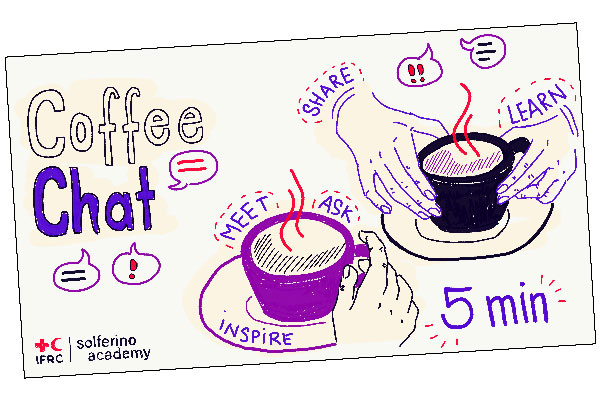
Blog: Keeping workshop participants on their ‘virtual toes’ at Climate:Red session on training

Building capacity virtually is here to stay, and interactive methodologies can keep participants virtually on their feet, ensuring organic learning!
This was the clear message from last week’s unique Climate:Red Summit where the Climate Centre introduced modules from its new Climate Training Kit in several sessions.
One of the most popular features of the Climate Training Kit has been its interactivity: learners, participants and trainees don’t just sit on chairs, listening in, taking hurried notes (or day-dreaming!) when the going gets too heavy, top-down, too long, or boring.
Instead much of the time is spent in interacting with each other, with people often on their feet, playing physical or mental games.
The focus is very much hands-on, building knowledge to change ways of thinking and working – dare I say, forever! Thus, the challenge in taking the modules to the Climate:Red Summit was that all participants would inevitably be sitting down, glued to their seats.
Centrepiece
Yet the feedback was all positive! As well as interactive virtual methodologies, this was an occasion to experiment with some Virtually Amazing tools, and most importantly ensure that all the participants were engaged throughout in doing something.
The Empower Yourself series of sessions on the kit focused on a wide range of topics: climate science and impacts, early warning early action, health, water and sanitation, urban resilience, gender and inclusion, policy engagement, climate finance, youth, communications and partnerships.
Perhaps the centrepiece – also using experience gained with the Partners for Resilience programme – was community resilience through combining disaster risk reduction, climate change adaptation and ecosystem management.
The sessions were in English, French and Spanish; CTK modules are available online in these languages.
Getting the participants to introduce themselves, including affiliation and location, via an interactive whiteboard or a Mentimeter enabled everyone to see who else was in the virtual room, where they were from, and what work they did.
Exhilirating
It also made it easier to interact when they adjourned to breakout groups to discuss solutions, identify climate risks, or apply climate science to reduce local weather-related risks.
“I learnt a lot from all of your experiences,” a health worker from Finnish Red Cross told her breakout group who were from Uganda and India, in the session introducing the gender and inclusion section of the CTK.
The fact that peer-to-peer learning was happening even with everyone sitting, glued to a screen, was exhilarating!
Another breakout group assessed recurring disasters, discussing how people who live in a coastal area, on a flood plain, in hilly terrain, or in a dense urban environment, for example, deal with the risks they face year in year out, with specific reference to PfR integrated risk management.
The highly informative Google doc the group generated surely confirmed the belief that virtual interactive capacity building will stay and grow.
Last week’s Climate:Red Summit, involving some 10,000 participants, broke new ground in virtual engagement, sharing and capacity building (and coffee breaks), not least in the Climate Centre session detailing new content in its Climate Training Kit. (Image: IFRC)